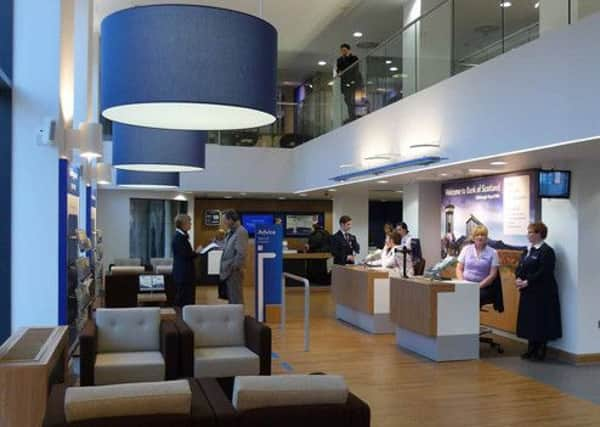Government to sell £2bn of Lloyds shares to public


Members of the public will be offered a discount of 5 per cent of the market price, with a bonus share for every ten shares for those who hold their investment for more than a year.
The value of the bonus share incentive will be capped at £200 per investor, and people applying for investments of less than £1,000 will be given priority in the share sale.
Advertisement
Hide AdAdvertisement
Hide Ad“It is the government’s intention to fully exit from its Lloyds shareholding in the coming months,” HM Treasury said.
“All proceeds from share sales are used to pay down the national debt.”
It added: “Military personnel and their spouses stationed overseas will be able to participate in the sale, where possible. This is in line with the government’s armed forces covenant, which ensures that members of the armed forces should not face disadvantage in the provision of public services.”
Speaking on ITV1’s Good Morning programme, Chancellor George Osborne said: “We are selling Lloyds shares to members of the public, people watching this programme, small investors, people who are going to have a chance to get something back having put all that money in under the last Labour government.”
Rebecca O’Keeffe, head of investment at stockbroker Interactive Investor, said: “Whilst unlikely to capture the imagination of investors in the same way as Royal Mail, the offer still looks set to deliver a good opportunity for retail investors, in particular those who are new to the market.”
The taxpayer holding in Lloyds fell below 12 per cent last month after the government sold off another 1 per cent chunk of the bailed‑out bank to institutional investors.
The sale meant the government has recouped £15bn of the £20.5bn state lifeline Lloyds received after it took over flagging rival HBOS in the worst days of the financial crisis in 2008.
The Treasury has reduced its stake from 24.9 per cent when it announced a trading plan in December to sell shares gradually into the market. It now stands at 11.98 per cent.
Advertisement
Hide AdAdvertisement
Hide AdLloyds is now profitable again after years of losses brought on by the acquisition of HBOS, which included Bank of Scotland and Halifax. The group resumed dividend payments earlier this year, and has said it will consider using spare capital to distribute additional special payouts to investors.
Lloyds chief executive Antonio Horta-Osorio, who has overseen the recovery of the bank’s fortunes, said in July that it was on track to achieve full re-privatisation within a year.
Richard Hunter, head of equities at Hargreaves Lansdown Stockbrokers, said the sale would attract investors, although he pointed out that the government was only offering a tiny chunk of the bank to the public.
“The buoyant interest in this share sale will only now accelerate with the terms firmly on the table,” he said.
“Based on the current share price, the £2bn sale equates to a 3.6 per cent stake, as compared to the 39 per cent stake the government held before they began the disposal programme, and is part of the 11.98 per cent stake which remains.
“In addition, the 5 per cent discount is equivalent to just 3.8p per share, whilst the sale overall is light even of the Royal Mail initial public offering, which weighed in at around £3.3bn.”
Hunter added: “Nonetheless, it does provide a welcome opportunity for smaller investors to at least participate in a fraction of the sell-off, in what is currently a well-regarded bank, seen as something of a barometer for the UK economy.
“With a projected dividend yield which could nudge 4 per cent and interest rates remaining in the doldrums, you can see this being of interest to income-seeking investors in the current environment.”